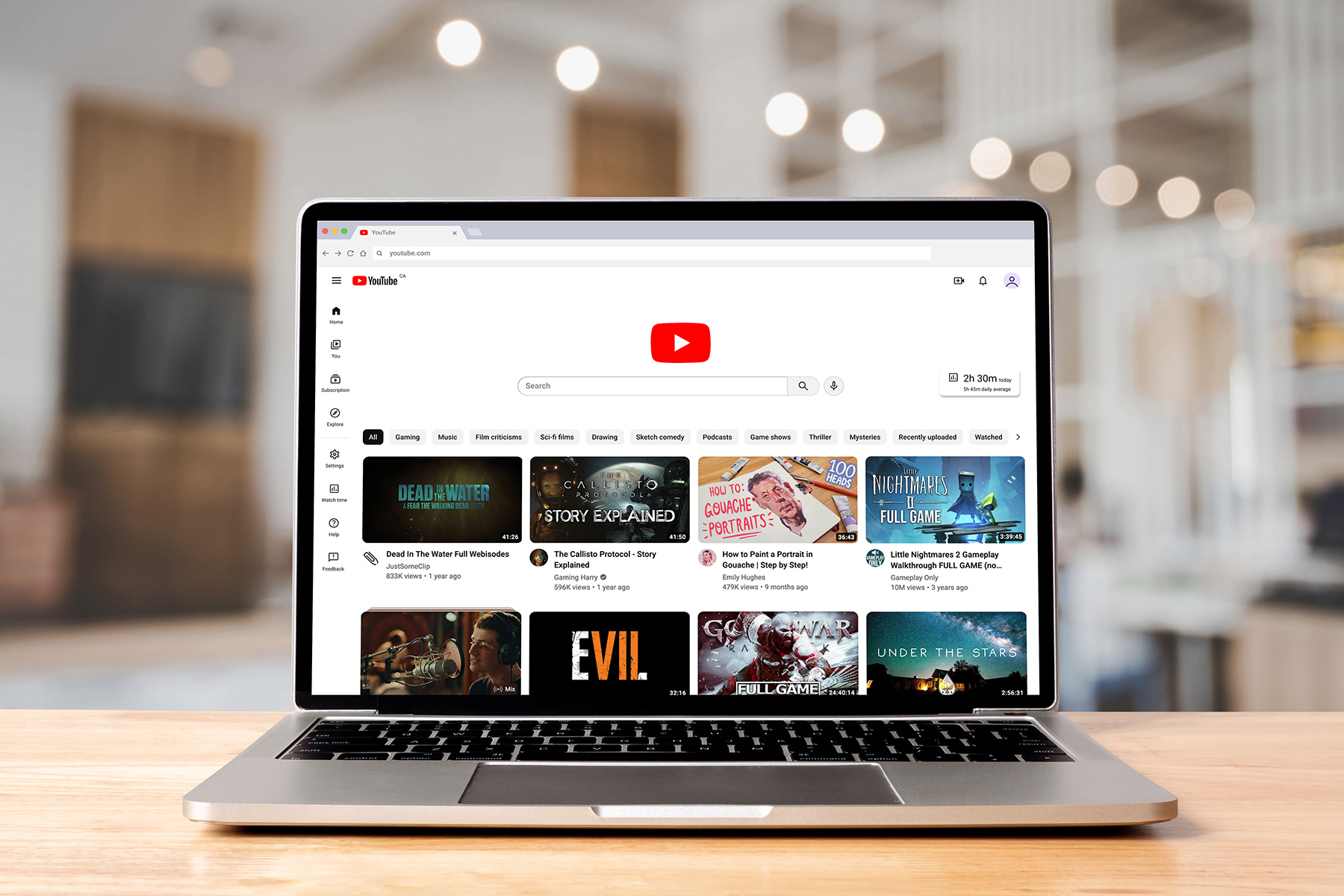Designing a more mindful YouTube experience
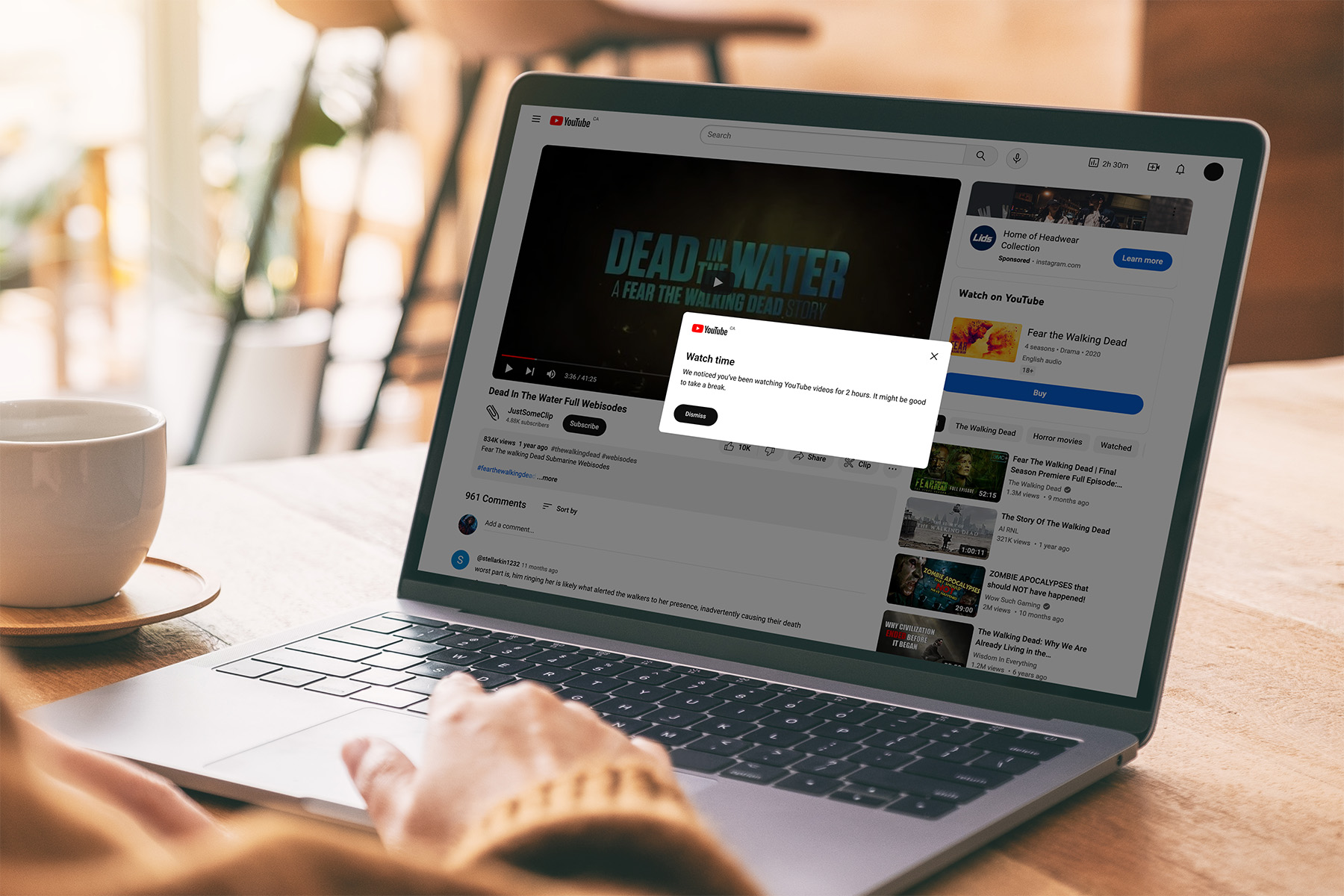
Overview
YouTube's features that were initially designed for users' convenience have made it easier for the platform to maximize watch time and engagement, while raising concerns about digital well-being. There are opportunities to redesign the YouTube platform and interface to better account for users' well-being. I reimagined the viewing experience to encourage more intentional actions and remind users to take breaks, with little intrusion on their experience.
Tools
Figma
Duration
Jan – Apr 2024 (13 weeks)
Challenge
How might we design the viewing experience on YouTube to reduce distractions and encourage mindful usage with minimal intrusion?
YouTube features designed to give viewers an uninterrupted experience often increase screen time. Videos with attention-grabbing titles and thumbnails perform well, despite fragmenting viewers' attention.
Fragmented attention
Creators are encouraged to produce sensational and attention-grabbing content which distracts viewers and grabs their attention.
Little-known time-tracking
Break reminders and watch time reports are only available on the app, despite desktop users having higher screen time (Semrush).
Increased screen time
Features such as autoplay and queueing, in combination with the algorithm, facilitate binges and increase watch time.
Research
Understanding how YouTube operates
The primary parties of YouTube's digital ecosystem are the viewers, the creators, and the advertisers. YouTube reaches these parties through its browser platform, mobile and TV apps, and monitors and regulates activities between them (The YouTube Formula).
Viewers explore and access content based on their goals and interests.
Creators make and upload videos for viewers to access.
Advertisers pay YouTube to display their advertisements and partner with creators to promote their products.
YouTube operates on an ad-driven model
As part of YouTube's Freemium experience, revenue is generated through advertisements shown on the platform. Most of its content and features are available to the general public at no cost, in exchange for ad placements on the content they access. YouTube offers subscriptions for an uninterrupted experience, offline viewing, and access to exclusive content.

Advertisers are vital
Ad revenue ensures the viewers have free access to content, the creators receive compensation for their works, and the platform makes enough profit to keep running. Keeping advertisers happy is a priority for both YouTube and its creators. Creators are encouraged to garner as much engagement as possible and make advertiser-friendly videos, which are favoured by YouTube's algorithm.
YouTube operates on an attention-driven model
The longer viewers stay on the platform, the more YouTube benefits. The algorithm, autoplay, and queue features aim to keep viewers on the platform for as long as possible. The constant stream of content keeps viewers on the platform and increases watch time and revenue for YouTube, but at the expense of fragmenting viewers' attention and high social media usage. Prolonged watch time contributes to screen addiction, reduced attention span, and mental health concerns, especially among young viewers.
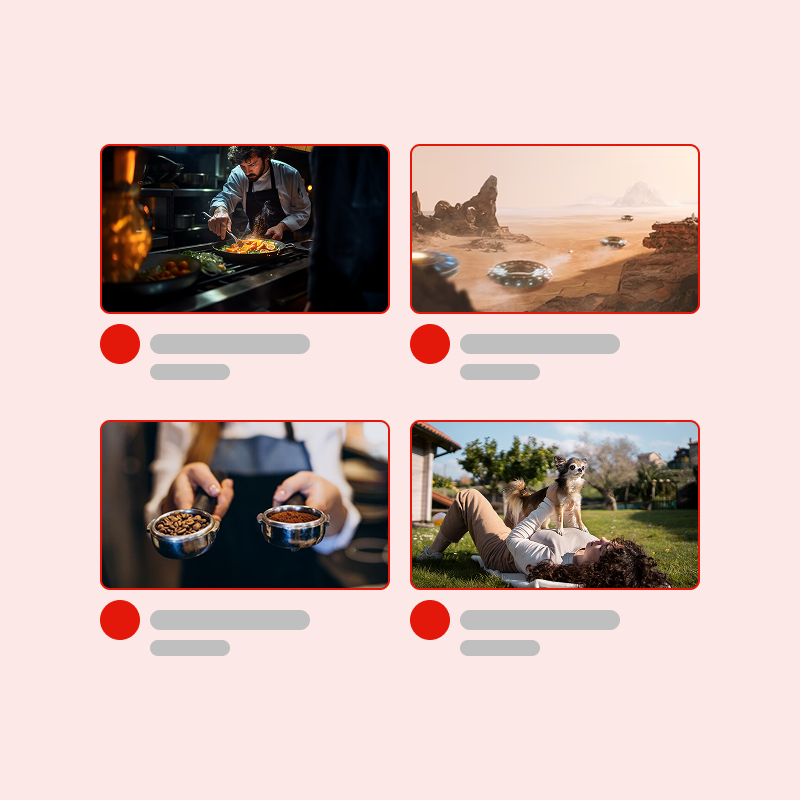
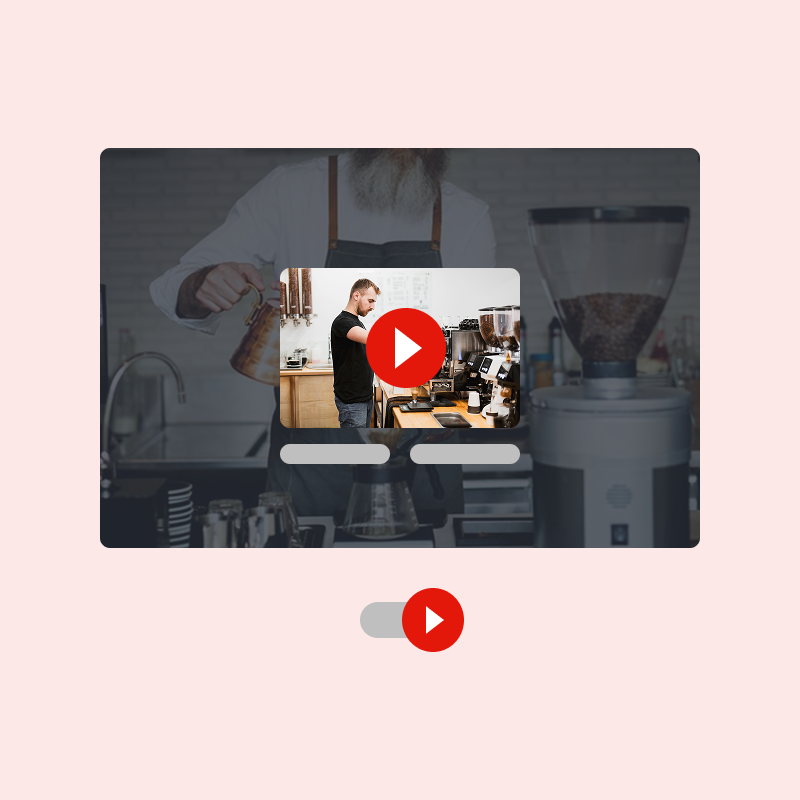
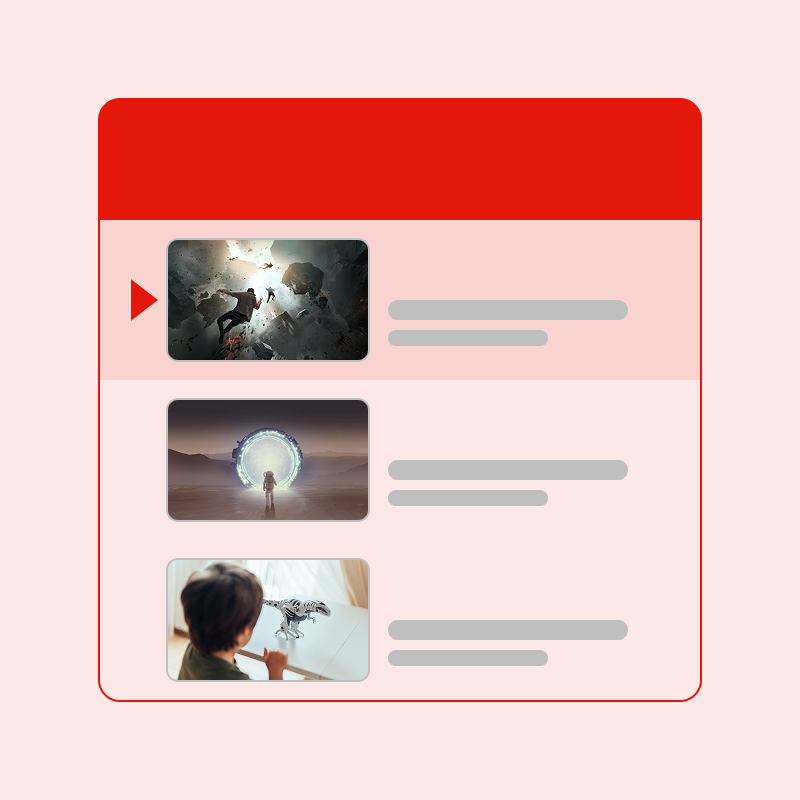
Define
A more mindful viewing experience
This project aims to redesign the current experience to be more cognizant of viewers' attention by encouraging more intentional actions. To create a more mindful experience, changes would be made to the ways viewers interact with advertisements and regular content on the platform.
Highlight the values and benefits YouTube currently provides instead of competing with other social media platforms.
Reduce mindless scrolling and encourage users to be more intentional with their actions without compromising ease of use.
Reduce screen time and encourage viewers to take breaks, while ensuring creators receive engagement and compensation.
Ad placements that balance mental well-being and revenue
Ads following the 20-20-20 rule (a 20-second break for every 20 minutes of screen time), can serve as shortened commercial breaks to reduce long binges and eyestrain. With the ads more reasonably spaced out, viewers would be more tolerant of longer unskippable ads, in turn ensuring revenue.
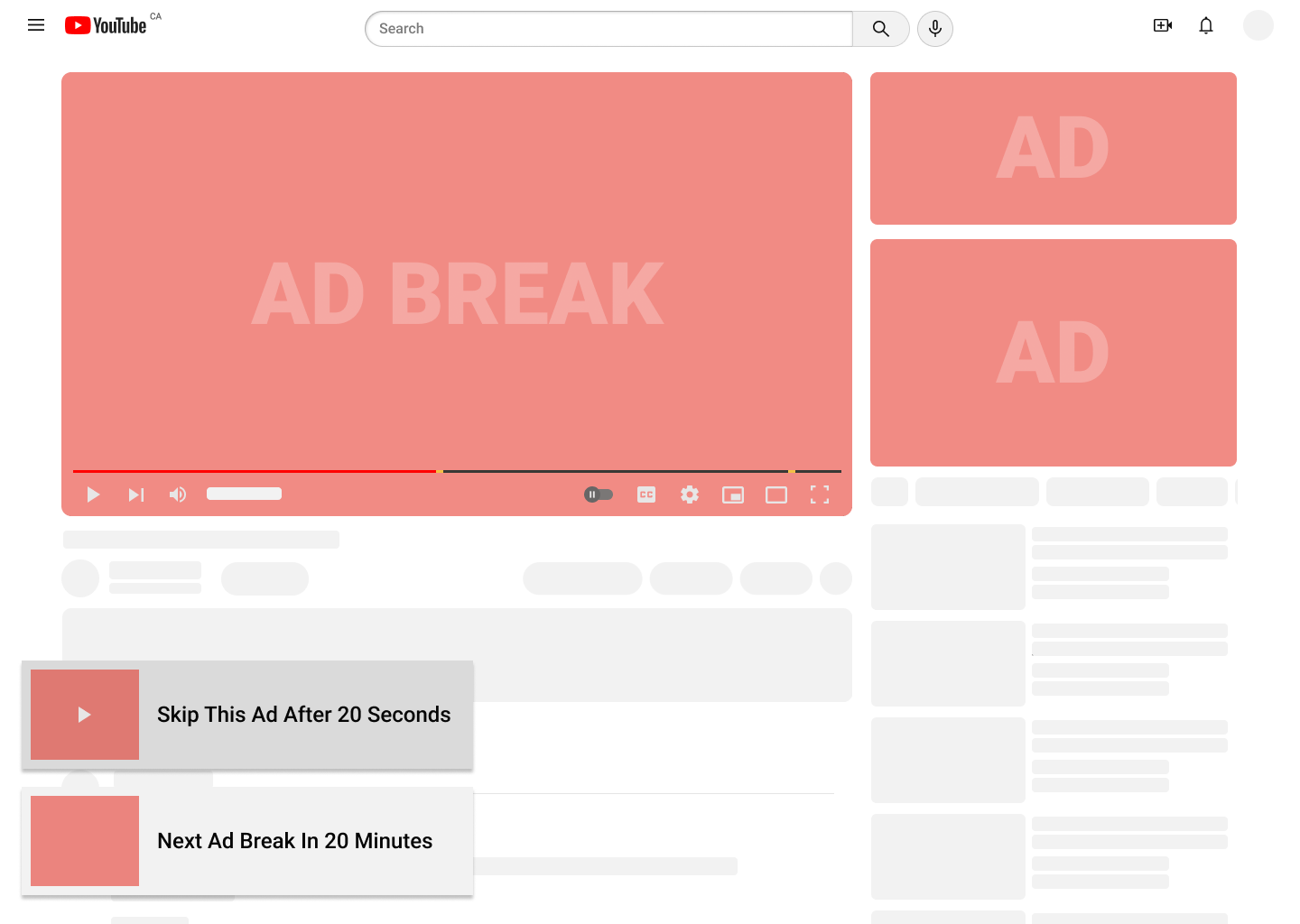
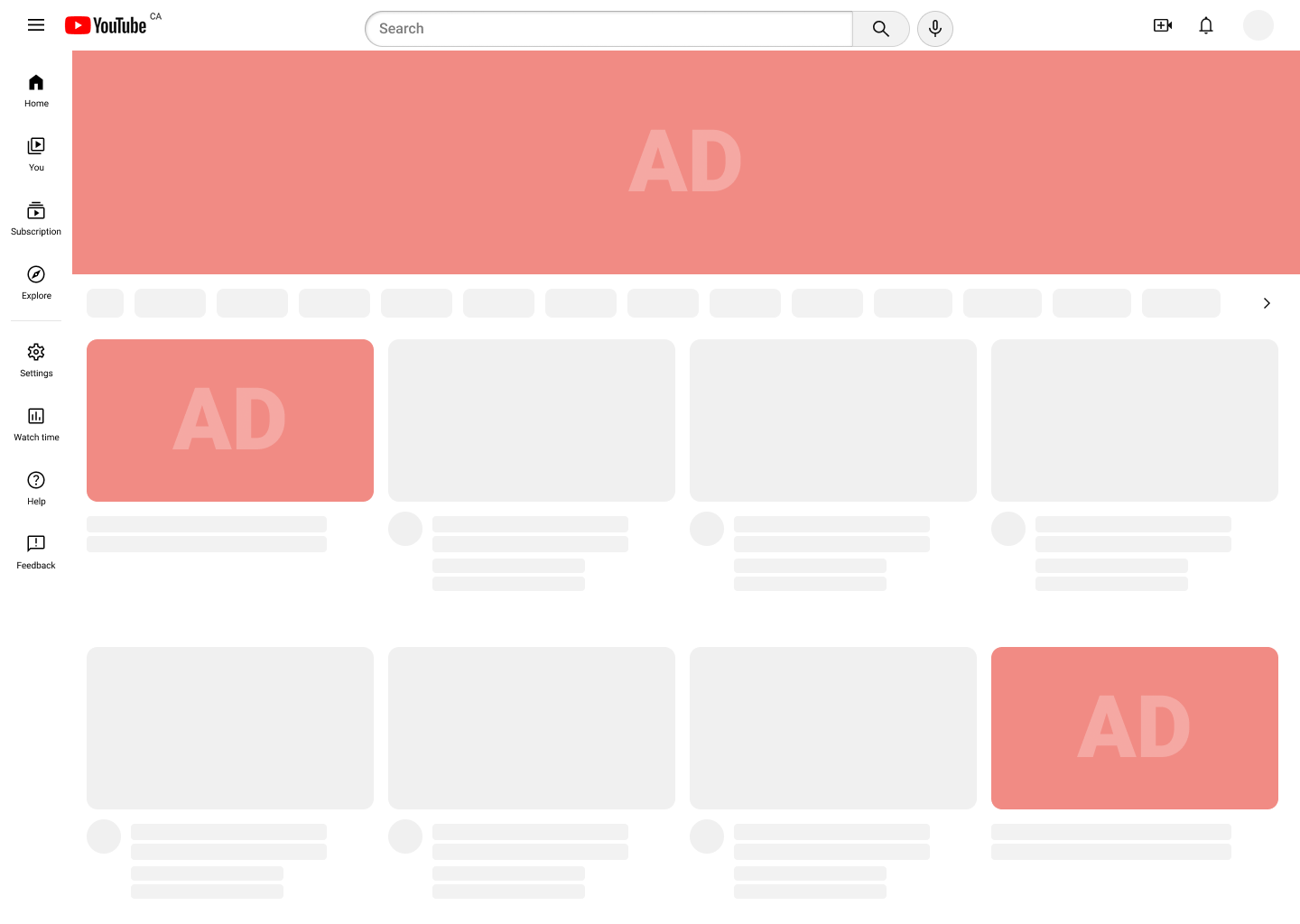
Design changes to facilitate mindful usage
With close to 3 billion active users worldwide, YouTube still benefits if some spend less time on the platform. Its entertainment and education values and the long-standing brand name are competitive factors that emerging platforms can't benefit from. While it's difficult to significantly change how the platform works without impacting its revenue or harming the user experience, there are smaller changes that can reduce distractions on the platform and encourage users to manage their screen time:
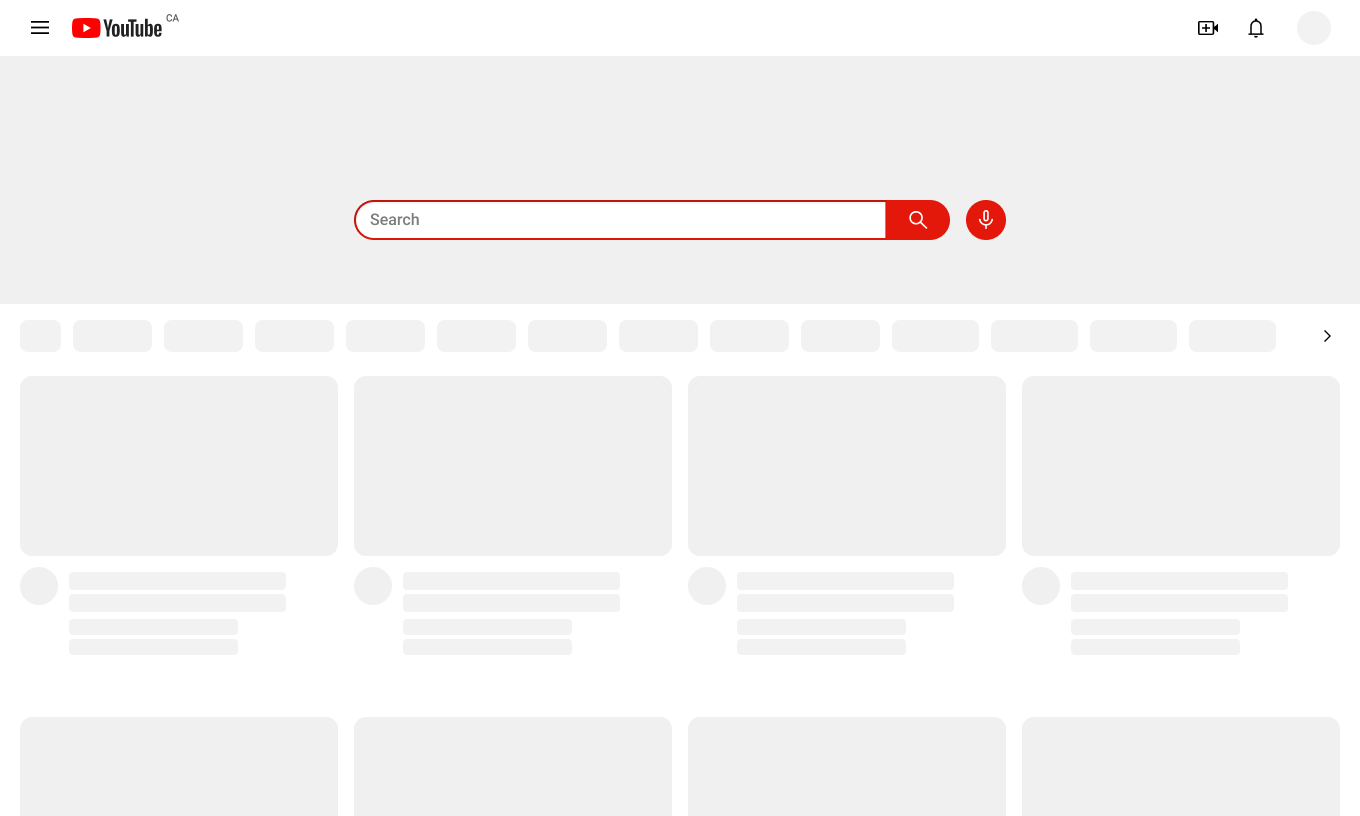
A redesign of the Home feed to place more focus on the search function.
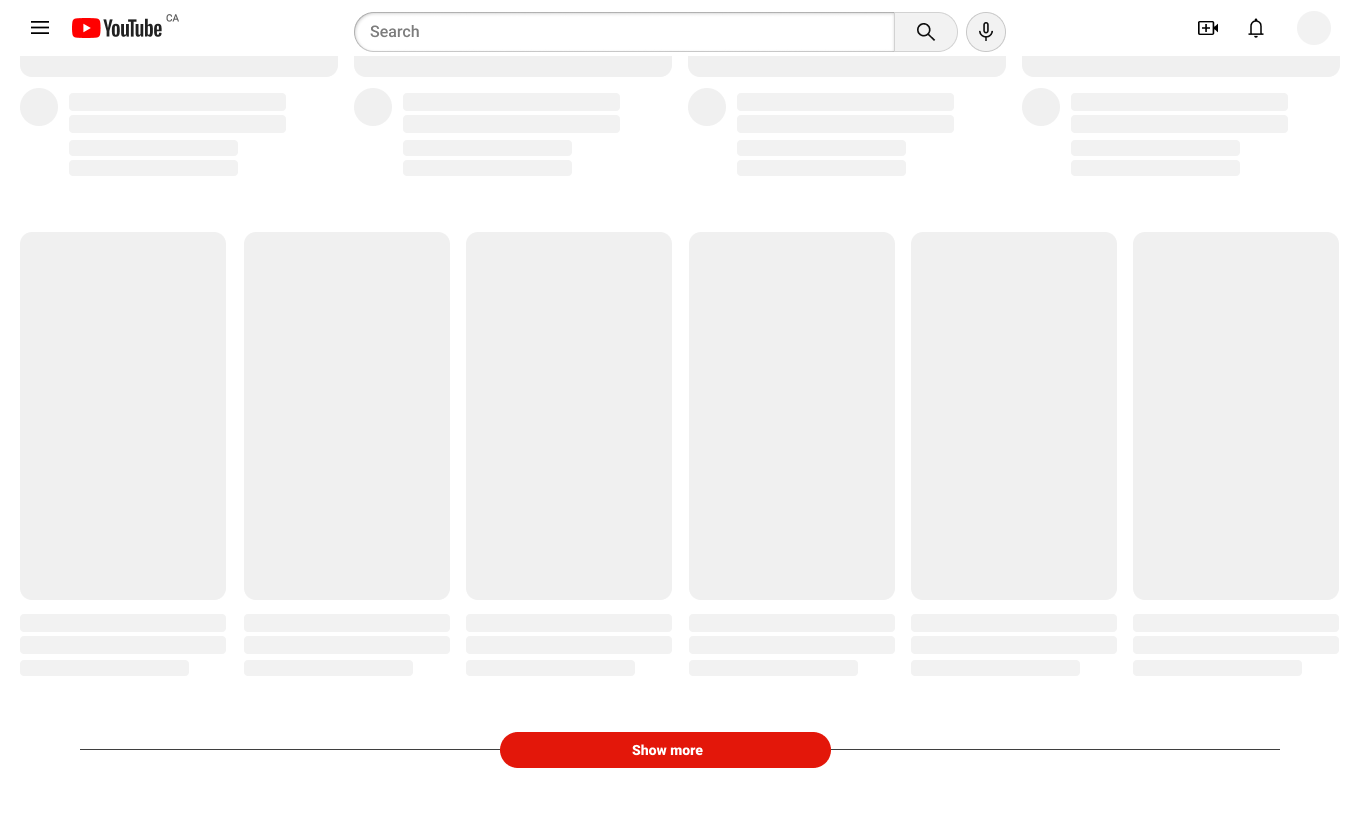
The reduction of infinite scrolling, combined with prompts for intentional query.
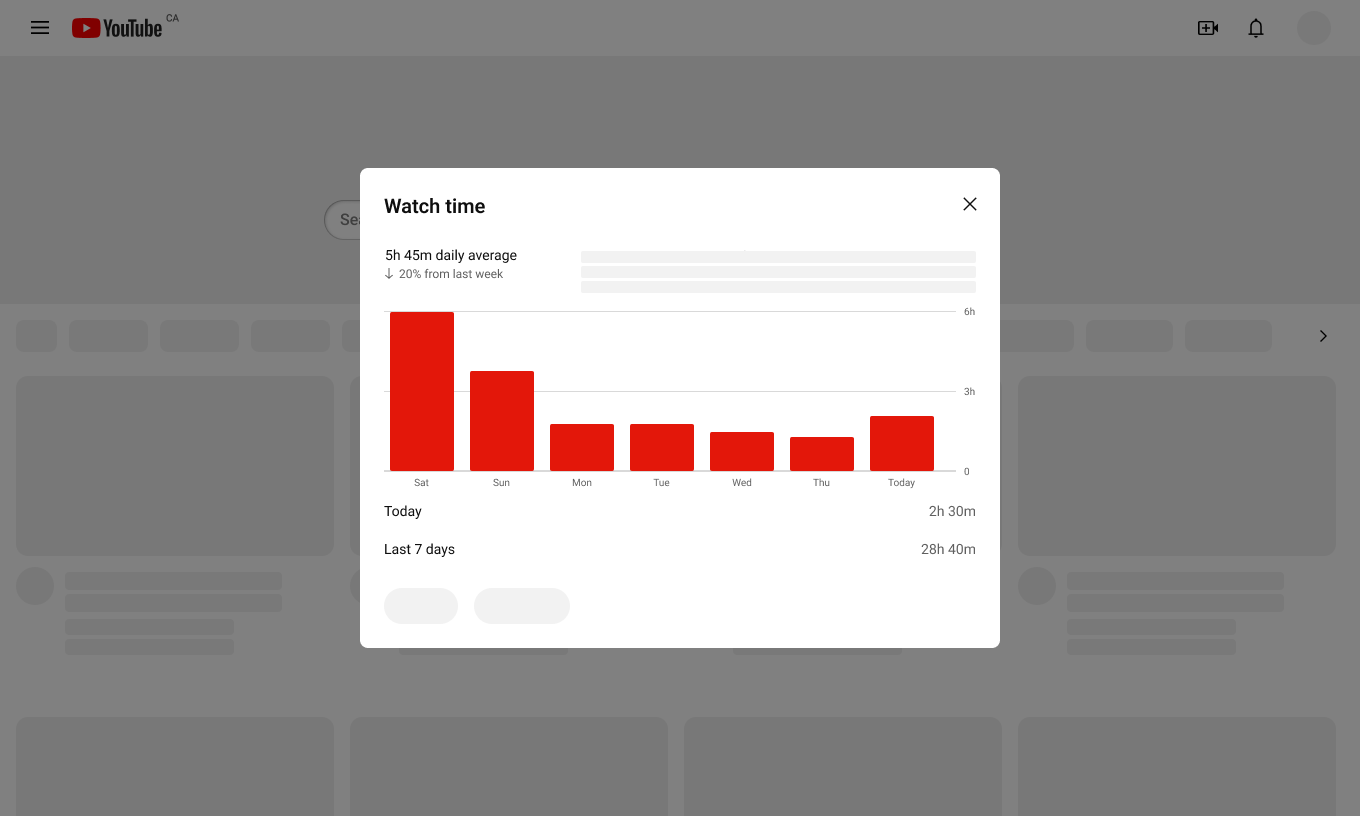
The addition of a time tracking feature and break reminders for the website.
Design
Placing more emphasis on the search bar
I moved the search bar closer to the center of the screen to draw attention to it when viewers first navigate to the Home feed. The additional emphasis on the search bar and filter tags encourages viewers to search for what they want, rather than passively exploring their recommendations.
Since this space is often used for masthead ads, I mocked up three advertisement experiences for user testing: (1) has an ad designed to work more cohesively with the search bar, (2) combines a regular masthead ad with the search field, and (3) removes the advertisement completely.
1
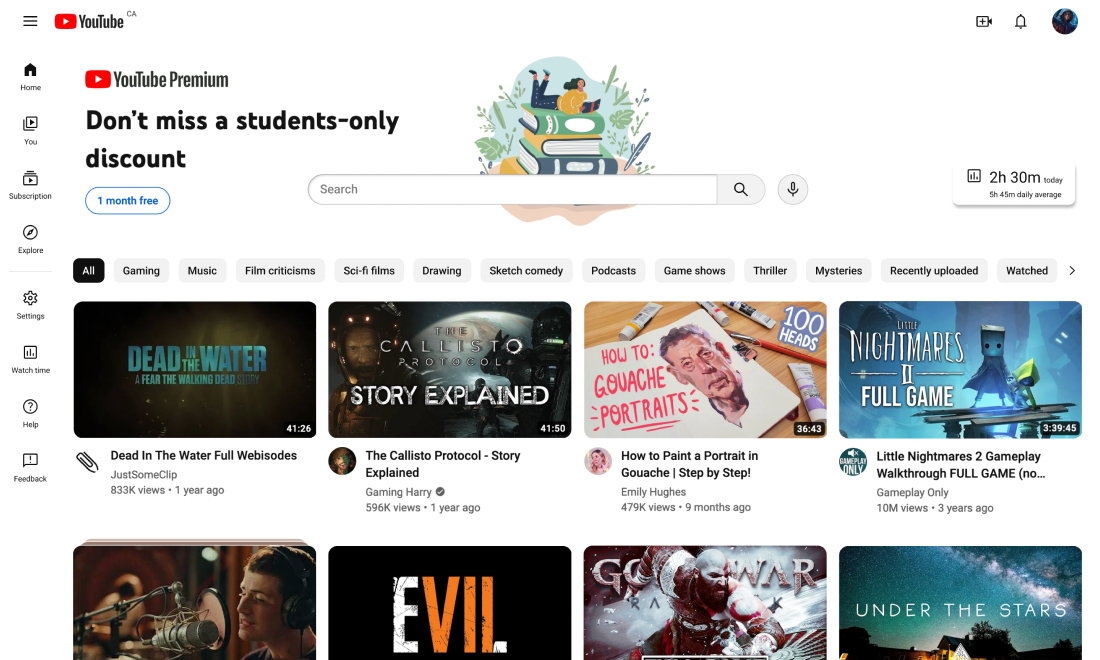
2
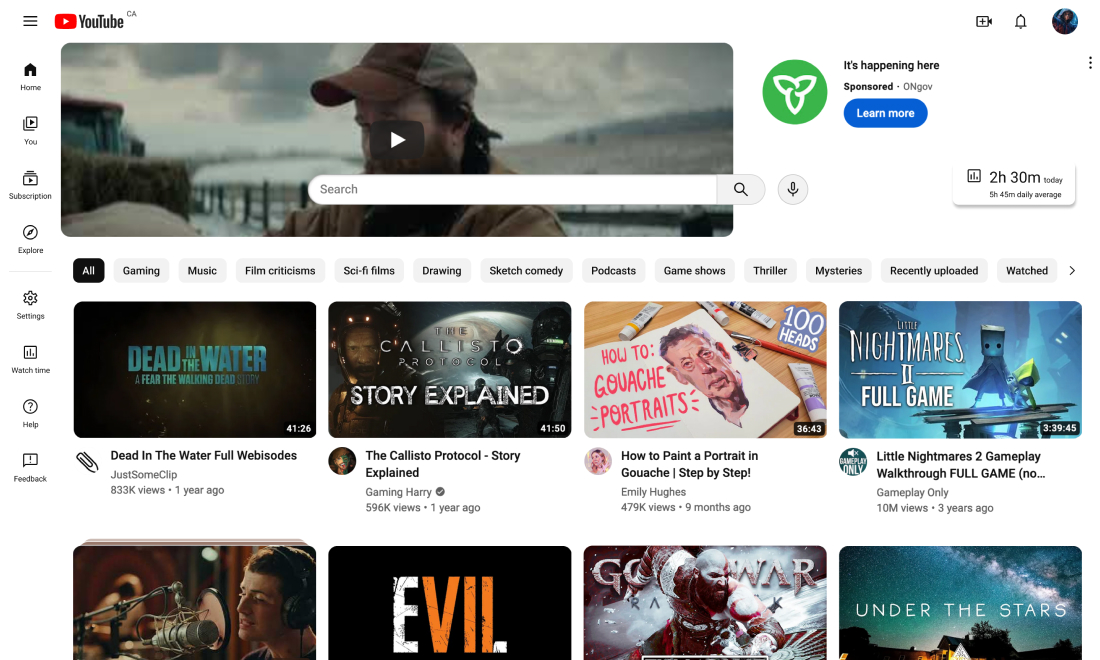
3
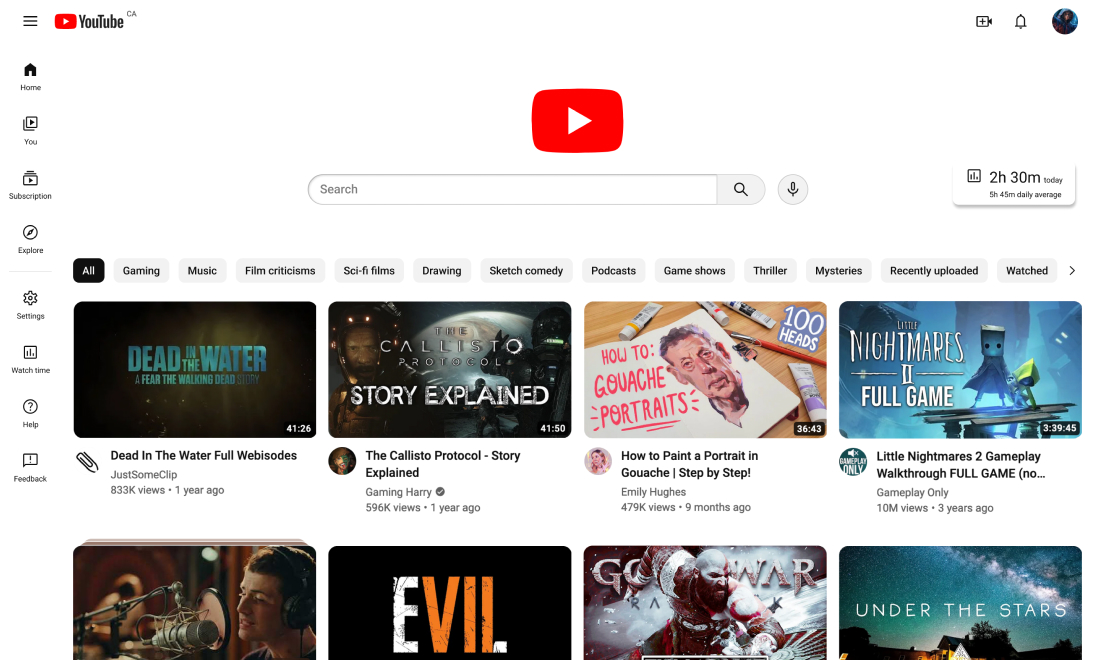
User testing found that while the prominent search bar is more likely to remind them to search for something, many viewers would still continue to browse. The large advertisement was the first thing to capture people's attention and was found to be too distracting. Removing the ad altogether creates a less intrusive experience and highlights the search bar more. This won't generate more revenue, but it will benefit users.
Removing infinite scroll
A finite number of content is displayed at a time—the user can click on “Show more” to load more videos. If users are on the Home feed, they will be given the option to actively search and filter for results after multiple clicks.
User testing focused on assessing whether the changes disrupt the user experience or compromise the ease of use.
Non-intrusive and mindful change
Some users didn't notice infinite scroll being removed, and they weren't bothered by having to click on a button to load more content. Users acknowledged that the removal of infinite scroll made them more mindful of their actions.
Informative filter prompt
Users would not follow the suggestions on the filter prompt, but it was easily dismissible and still informed users of their options.
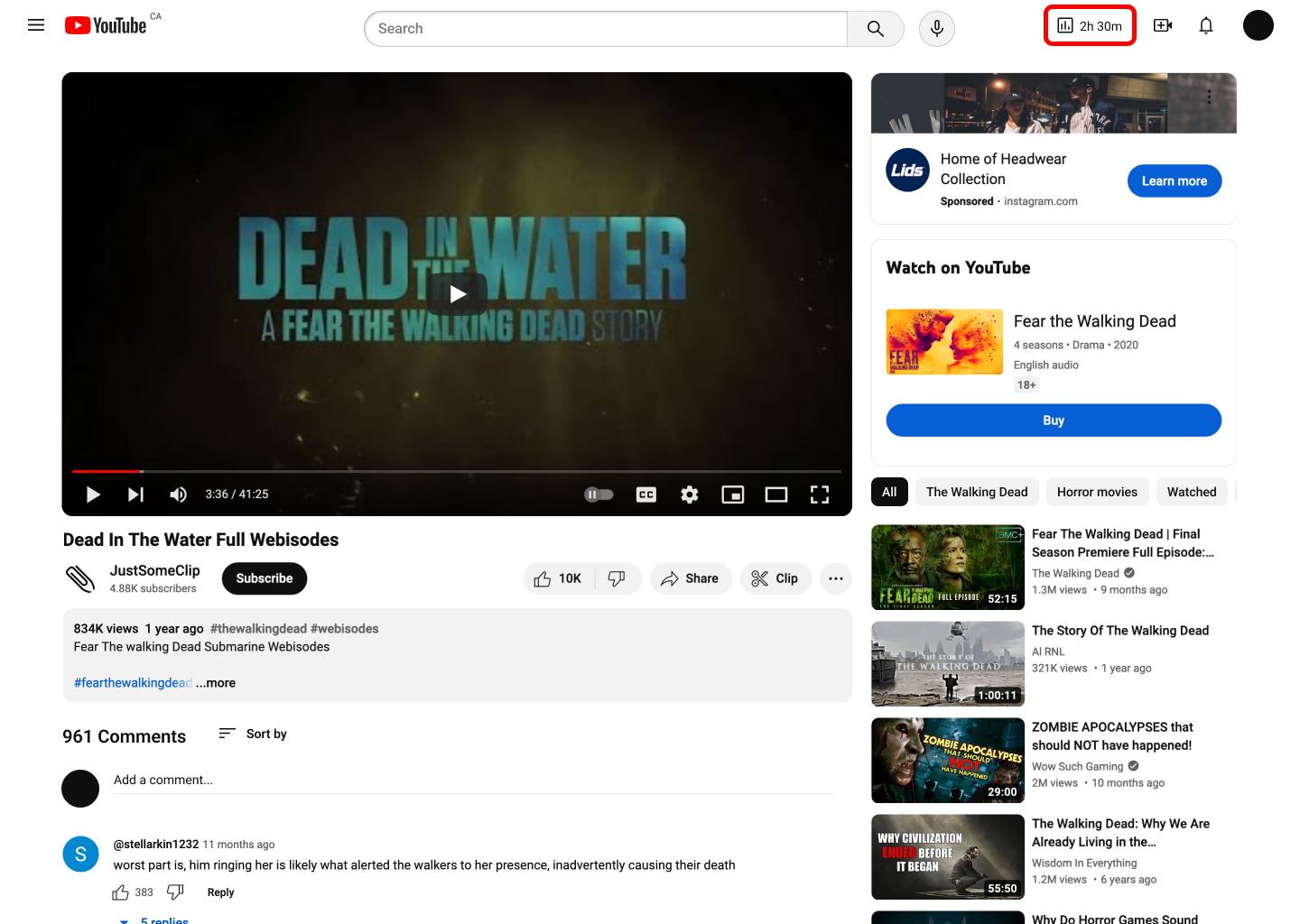
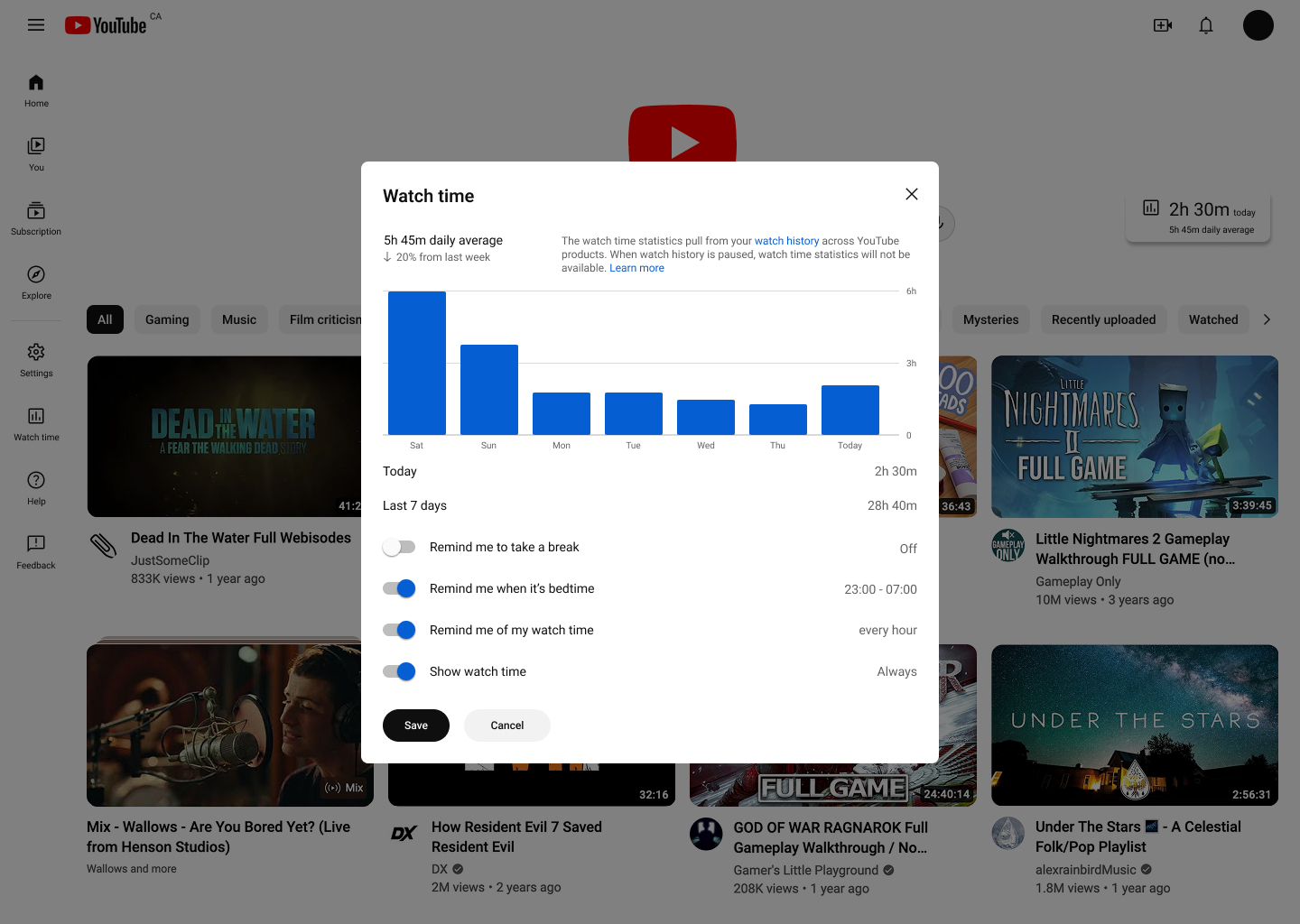
Adding time tracking and break reminder
I used the "Time watched" feature in the YouTube app as the foundation to design a time tracking feature and watch time reports for the website. Having an active timer displayed onscreen can be distressing, so the time watched will only update when the user clicks on a new video. Users can disable this feature.
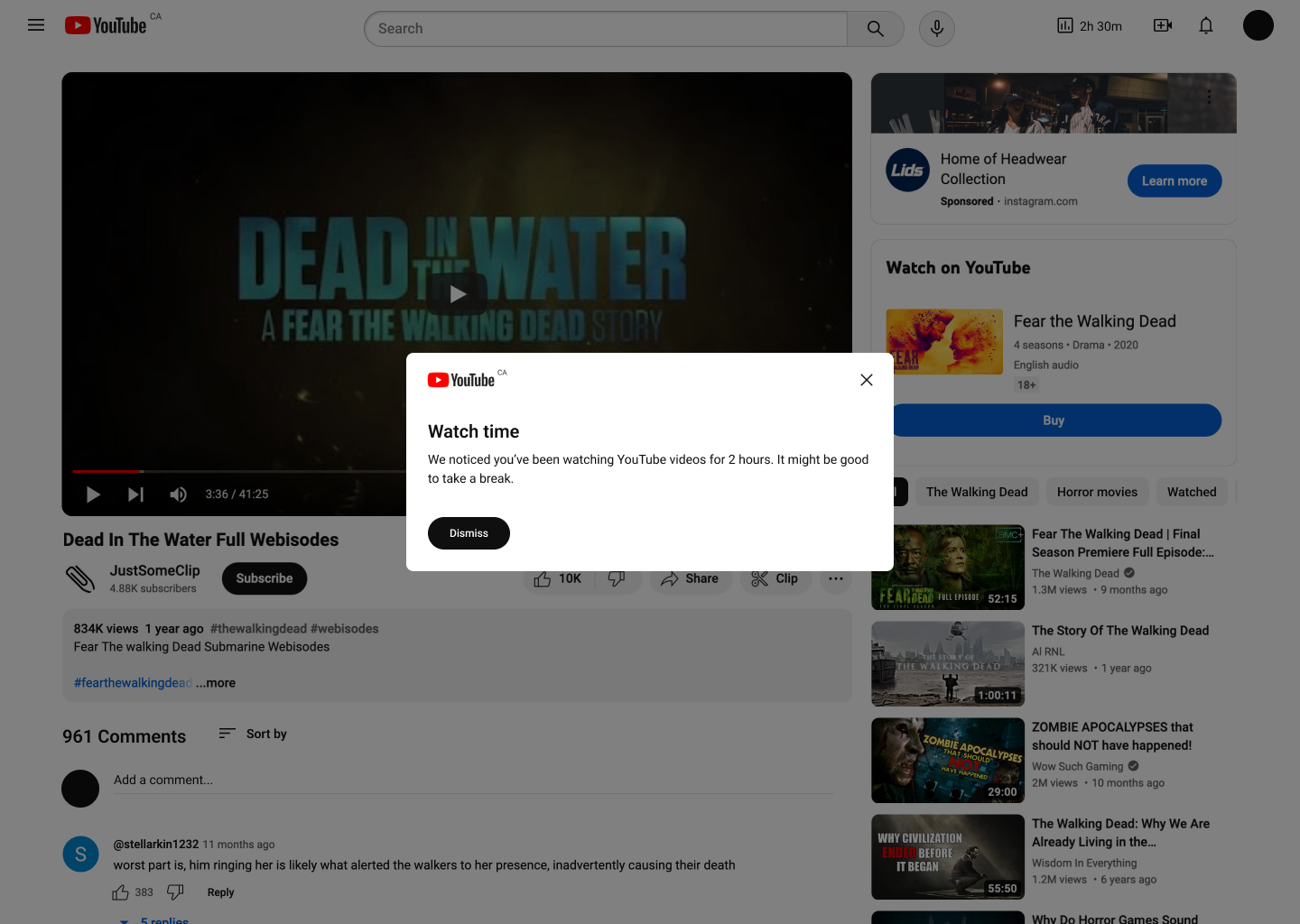
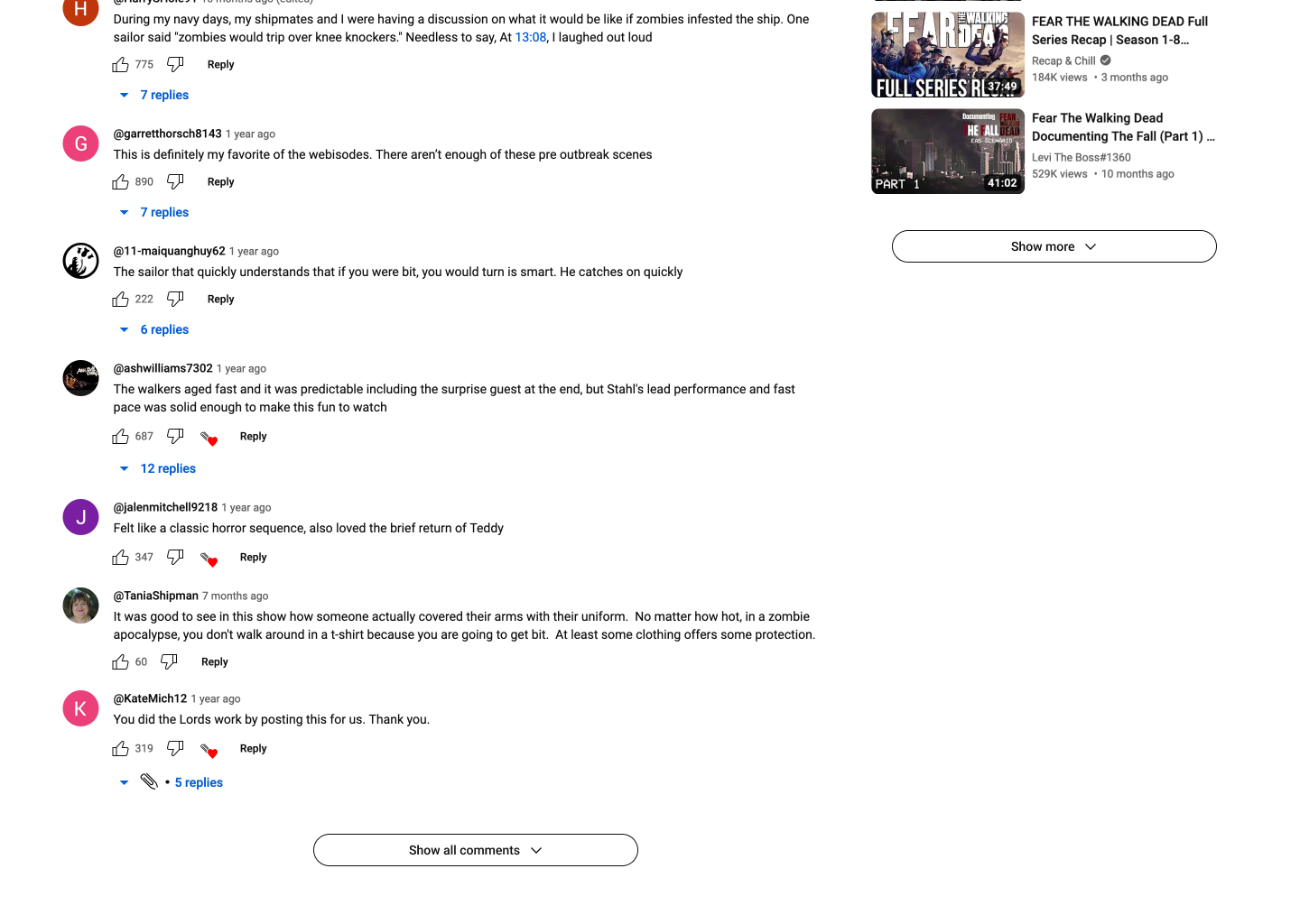
I adapted the app's "Time watched" report for a desktop experience. A pop-up alerts viewers of long usage periods. User testing focused on the placement of the timer and how intrusive it can be on the user experience.
Timer placement
The timer's placements are noticeable without causing much mental drain, especially when it's on the header. Users liked that it's not an active timer counting up or down.
Long usage reminders
Despite feeling self-conscious, users would keep the reminders on because the pop-ups help them stay mindful of their screen time without being too intrusive. Test participants would keep the reminders on, whether they follow them or not. They suggested allowing users to set their own interval for the “long usage” pop-ups.
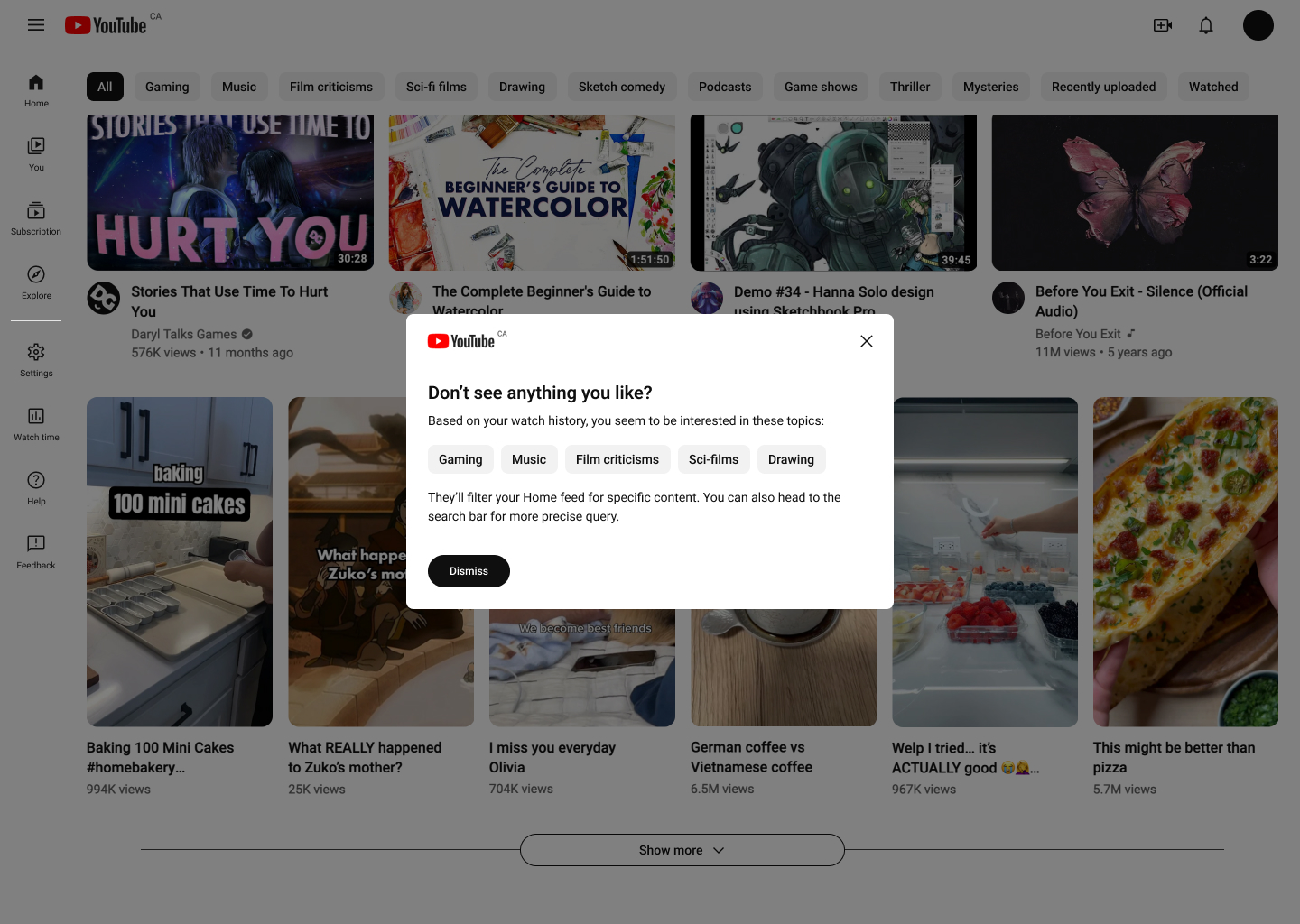
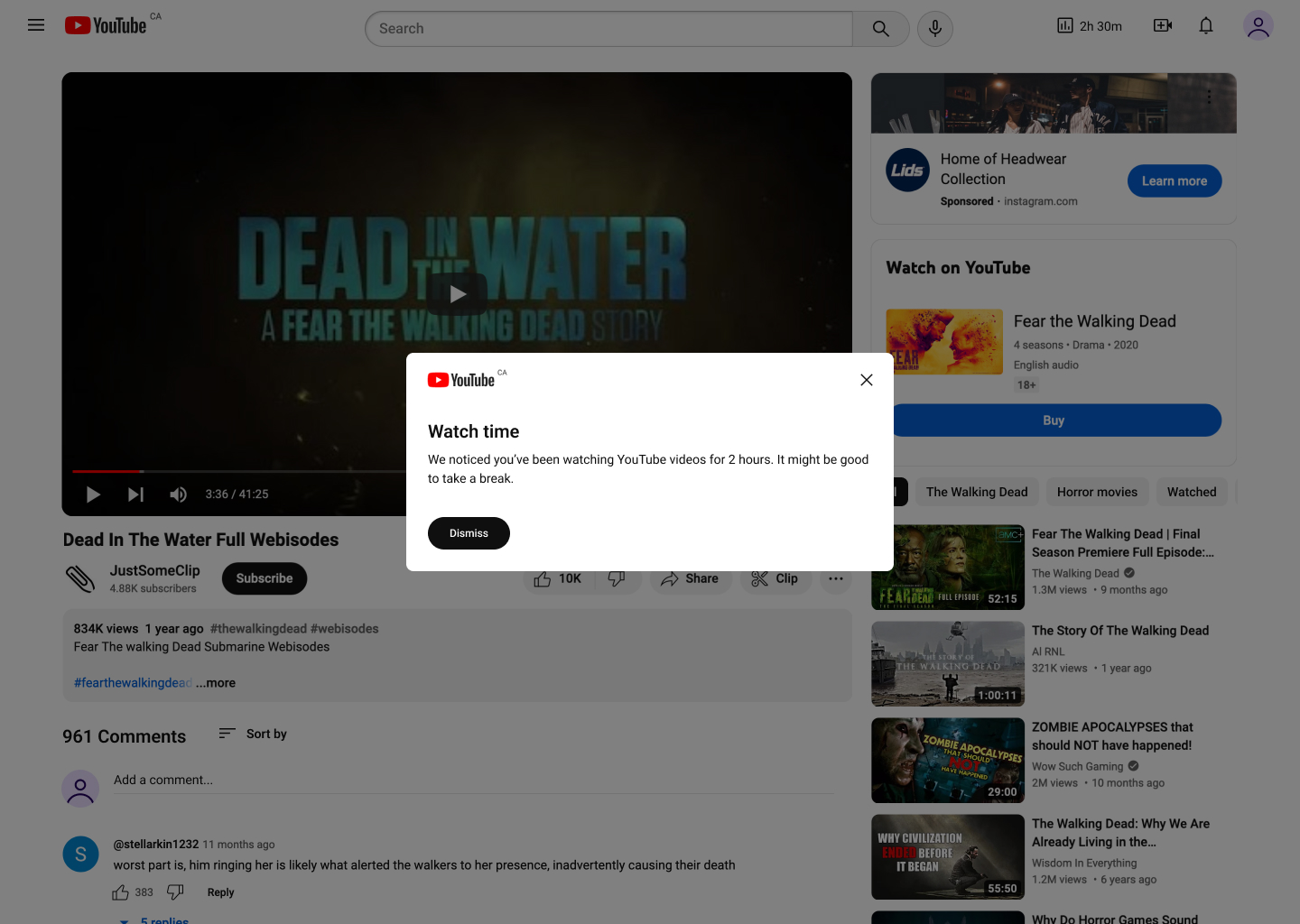
Solution
Redesigned Home feed to promote intentional usage
This redesigned Home feed puts more focus on the search bar and encourages more active queries for content. Users are shown a finite number of content at a time and can actively load more videos.
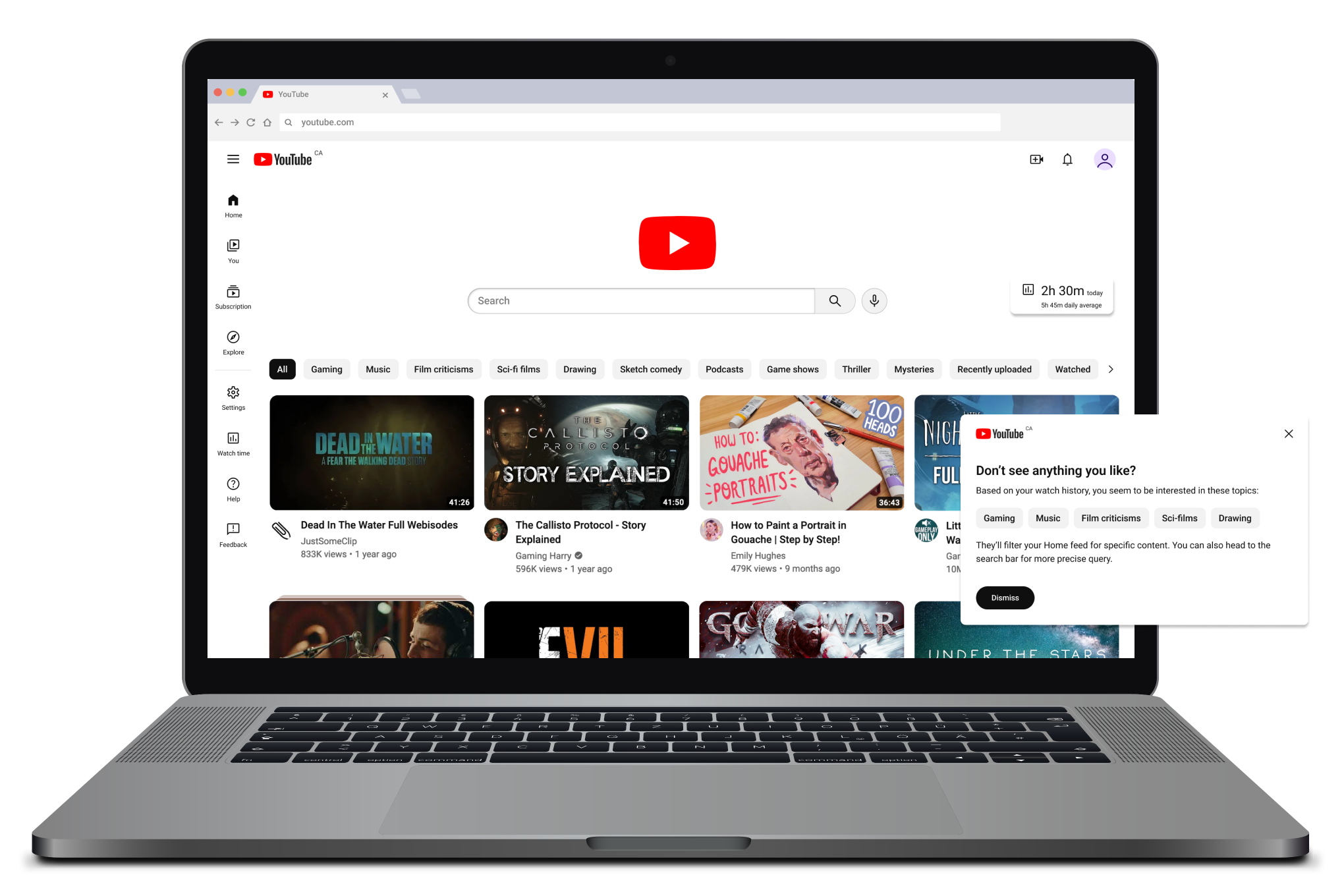
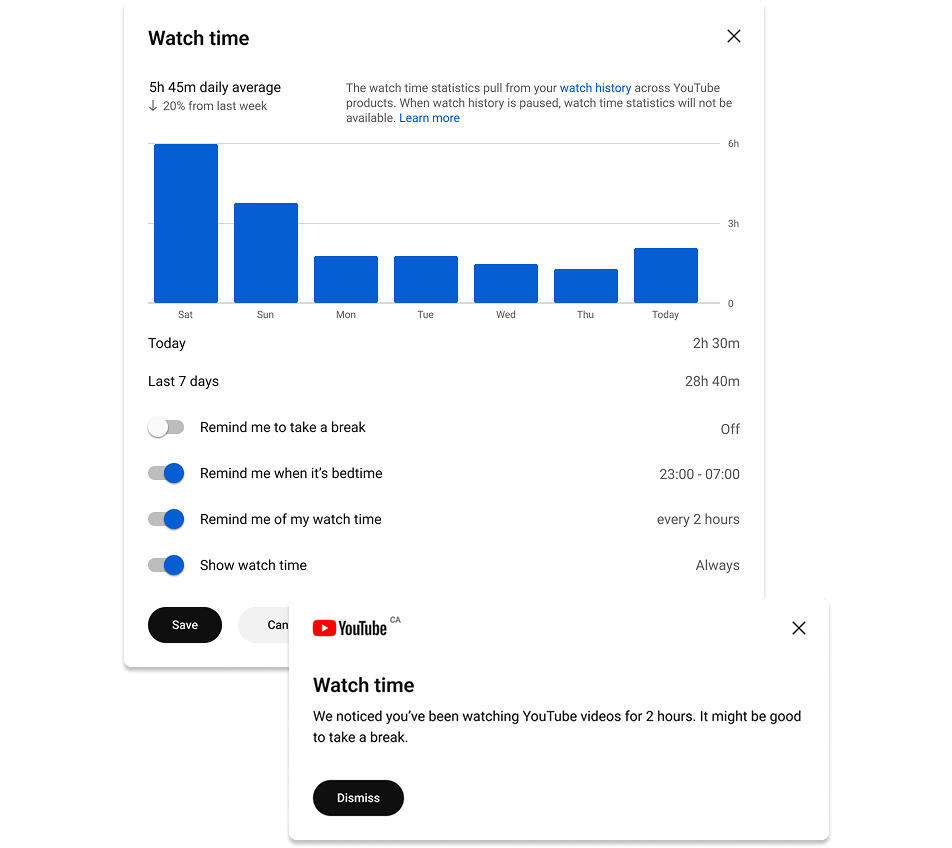
More accessible time tracking capability
Time tracking and break reminder features, only available on the YouTube app, were added to the redesigned web platform, with periodic alerts of long continuous usage to allow users to monitor their usage and remember to take breaks. They are not intrusive to test participants and help them be more mindful when using the platform.
Balanced ad breaks as screen time breaks
Setting ads frequency according to the 20-20-20 rule can encourage screen time breaks and still ensure revenue. Viewers may be more tolerant to 15 to 30-second non-skippable instream ads if they are reasonably spaced out, guaranteeing revenue for creators and the platform.
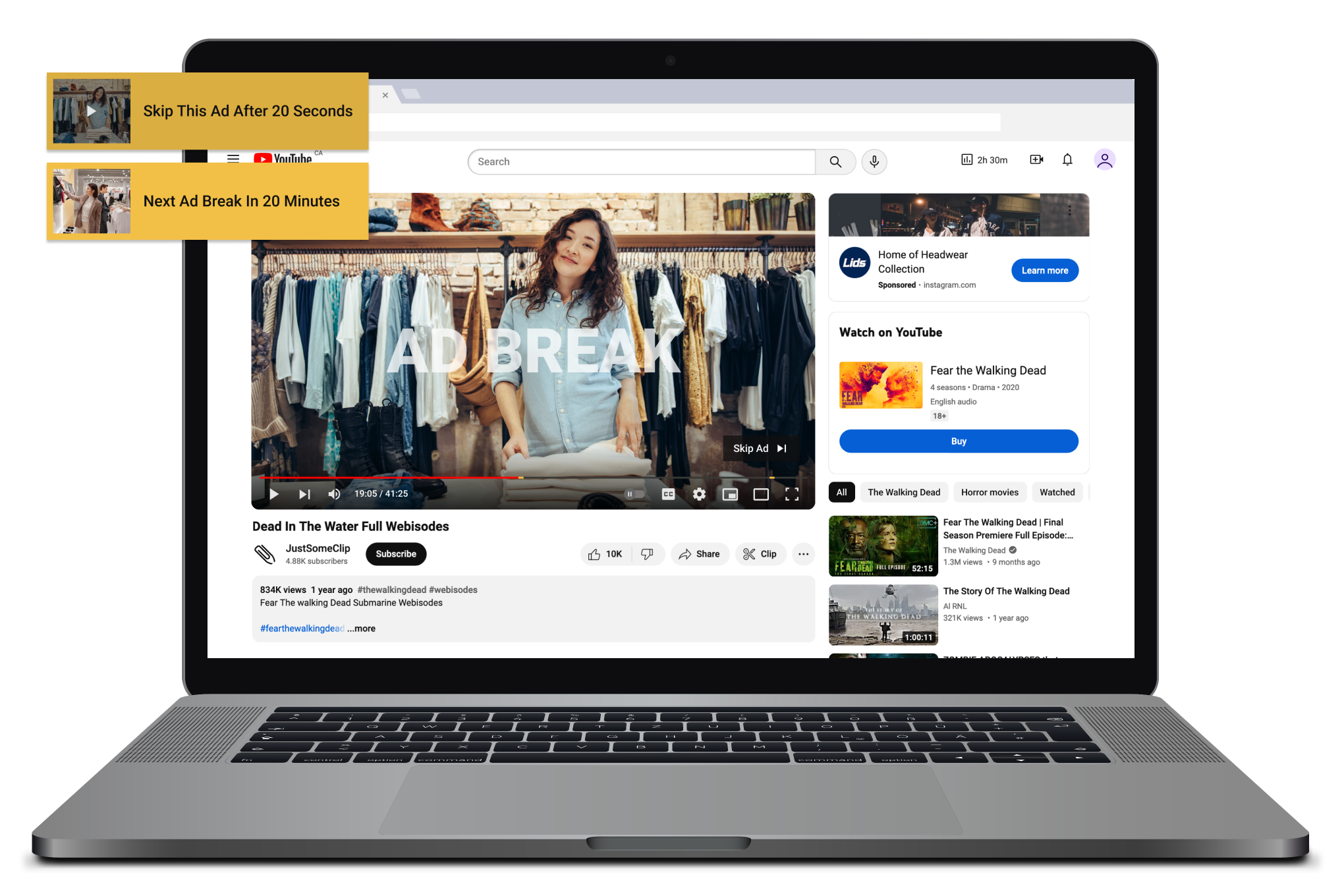
Reflection
Balancing user experience and revenue
Identifying a direction to encourage users to stop using the platform momentarily while still ensuring revenue generation was a challenge. With more time and business understanding, I would have liked to approach this project from a different angle than just monitoring screen usage.
What's next?
I aim to continue iterating the long-usage pop-ups to be less repetitive and more engaging. Alongside this exploration, I want to scale the proposed changes to suit all devices and conduct further user testing to capture a wide range of experiences.
